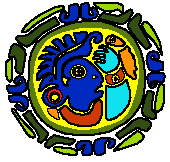 Shuar Federation
Shuar Federation 

Based in the Amazon of Ecuador,
the Shuar Federation emerged in 1964 as a response to agrarian reform laws.
That year, Ecuadorian dictator Rodriguez Lara began to encourage colonization
of the Amazon forest, an area that had traditionally been inhabited by
the Shuar Indians. When the farming and oil industries moved into
the area, the ecological effects were devastating. The Indians’ lifestyle
was interrupted and their lands were threatened. In order to protect
the land, as well as the foothold they had in Indian culture, a group of
Catholic missionaries started the Shuar Federation.
 Their first goal was to establish ownership
of their land. The Shuar see land as a communal holding, without
an individual owner. Thus, they worked to gain collective ownership.
With some outside help and funding, the organization has surveyed, mapped,
and titled 400 communities. Overall, they have safeguarded eighty
percent of their ancestral land (Cadaval).
Their first goal was to establish ownership
of their land. The Shuar see land as a communal holding, without
an individual owner. Thus, they worked to gain collective ownership.
With some outside help and funding, the organization has surveyed, mapped,
and titled 400 communities. Overall, they have safeguarded eighty
percent of their ancestral land (Cadaval).
Ultimately, the Shuar hope to preserve
their culture, and in order to do so, they have implemented several programs.
First, they broadcast radio programming to the various Shuar villages.
These broadcasts keep the community informed, as well as educate the listeners.
Through radio and other bilingual education programs, the Shuar can keep
their children at home instead of sending them to boarding schools.
Boarding schools are perceived as a major threat to cultural preservation
because the education is western-style and the teachers are often nuns
promoting Christianity (Sponsel 272). In addition, simply by living
away from the Shuar culture, children lose the Shuar identity.






Despite their successes in the areaof cultural
preservation, the Shuar have encountered difficulties. Their economy
depends heavily on cattle ranching. This industry poses a significant
danger to the rain forest and the traditional Indian farming methods (Selverston
135). Also, the Shuar have experienced considerable conflict with
neighboring groups, partially because of their ranching.
Though they have achieved many things
on the local level, the Shuar Federation has limited resources. In
1980, when the Confederation of Indigenous Nationalities of the Ecuadorian
Amazon (CONFENIAE) formed, the Shuar were immediately involved. This
umbrella organization works on a national level to fight for land, human
rights, and cultural survival in general (Selverston 135). Leaders
of the Shuar Federation often become leaders in CONFENIAE. Thus,
the Shuar Federation serves as a training ground for indigenous leaders.
For more information on the Shuar Federation,
Click
Here.
Catch a Ride Back to the First
Page
Pachakut'i
Zapatistas (EZLN)
Cultural Survival
Popular Revolutionary Army
Confederation of Indigenous
Nationalities of Ecuador (CONAIE)
Coordination Indigena
de la Cuenca Amazonica (COICA)
Sandinista National Liberation
Front (FSLN)
Bibliography
 Shuar Federation
Shuar Federation 
 Shuar Federation
Shuar Federation 
